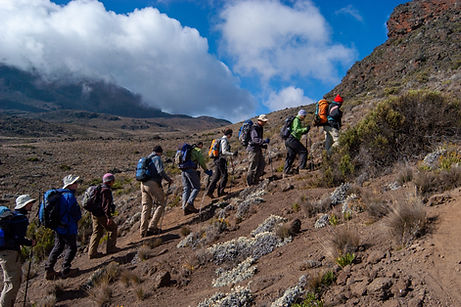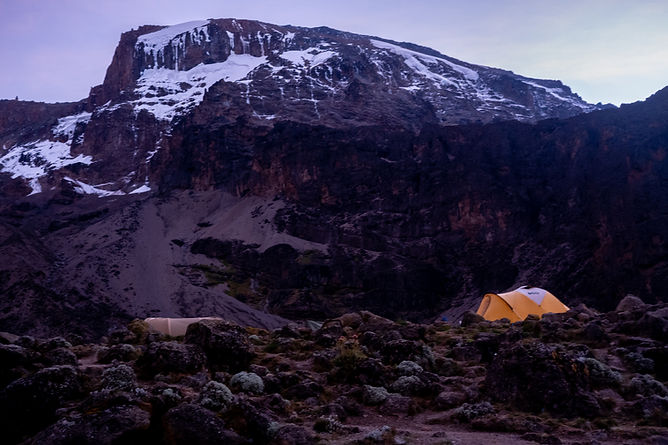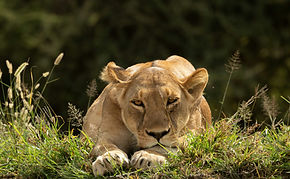
Kilimanjaro Climb Experience
Why Choose a Kilimanjaro Climb Experience
The Kilimanjaro climb experience is a once-in-a-lifetime journey to the highest peak in Africa—Mount Kilimanjaro, standing at 5,895 meters (19,341 feet). Trekkers ascend through five stunning ecological zones, from tropical rainforests to arctic summit glaciers, offering unmatched scenic diversity. Unlike technical climbs elsewhere, Kilimanjaro requires no special equipment or mountaineering skills—making it accessible to both experienced hikers and adventurous first-timers.
Several well-established Kilimanjaro hiking tours offer guided treks via routes like Machame, Lemosho, Marangu, Rongai, and the Northern Circuit. Each route differs in scenery, acclimatization profile, and length—ranging from 6 to 9 days. Routes like Lemosho and Machame are popular for their high summit success rates and spectacular landscapes, while the Northern Circuit offers a quieter, more remote experience with panoramic views. Choosing the right route is key to a safe and enjoyable journey.
Climbing with a certified local operator ensures expert guidance, proper altitude acclimatization, and ethical treatment of porters. The experience not only offers personal fulfillment but also supports the local economy and conservation efforts. Reaching Uhuru Peak at sunrise is the ultimate reward—offering breathtaking views and a deep sense of achievement for every traveler who dares to take on this iconic African adventure.
TOP RATED PACKAGE FOR KILIMANJARO CLIMB EXPERIENCE
Choose the Right Kilimanjaro Hiking Tour Route
When planning your Kilimanjaro climb experience, one of the most important decisions you’ll make is selecting the right route to the summit. Each trail offers a different mix of scenery, difficulty, acclimatization profile, duration, and crowd level. Some are designed for better success rates, while others prioritize scenic beauty or solitude. Understanding the options helps ensure a rewarding and safe adventure suited to your fitness level and trekking style. Below are the most popular Kilimanjaro hiking tour routes with detailed descriptions to help you choose the best one for your journey:
Lemosho Route – Best for Scenic Views & Acclimatization
The Lemosho Route is widely considered the most beautiful trail on Mount Kilimanjaro. Spanning 7 to 8 days, it starts on the western side of the mountain and crosses the lush rainforest, the expansive Shira Plateau, and dramatic ridgelines before merging with the Machame Route. It offers excellent acclimatization due to its longer duration, and a higher success rate. The Lemosho Route is perfect for travelers who want a quiet start, a scenic journey, and the best chance of reaching Uhuru Peak.

Machame Route – Most Popular and Adventurous
Often called the “Whiskey Route”, the Machame Route is a favorite among adventurous hikers. Known for its steep ascents and incredible scenery, it includes features like the Barranco Wall, Shira Plateau, and breathtaking views of glaciers. Lasting 6 to 7 days, it follows a “climb high, sleep low” acclimatization strategy, which improves your summit chances. It’s more challenging than Marangu but far more scenic and rewarding.

Rongai Route – Quiet and Unique Northeastern Approach
For those seeking a quieter trail, the Rongai Route is the only route that ascends Kilimanjaro from the northeast side, near the Kenyan border. Offering 6 to 7 days of hiking through dry alpine terrain and forests, this route is great during the rainy season as it stays drier than others. Though slightly less scenic than Lemosho or Machame, Rongai makes up for it with solitude and the chance to see wildlife like colobus monkeys. It also descends via the Marangu Route, giving a different view on the way down.

Marangu Route – The “Coca-Cola” Route with Hut Accommodation
The Marangu Route is the only Kilimanjaro hiking tour route that offers sleeping huts instead of tents. It’s also the shortest, typically taking 5 to 6 days, and is often considered more comfortable due to the hut infrastructure. However, its rapid ascent and lower acclimatization time result in a lower summit success rate. Marangu is best for trekkers looking for a shorter, less rugged experience, though it's busier and less scenic than the others.

Northern Circuit – Longest, Most Remote, and Highest Success Rate
The Northern Circuit is the longest and most remote trail, taking 9 days to complete. It offers the best acclimatization profile and one of the highest success rates. Starting from Lemosho’s trailhead, it branches off to circle the mountain’s northern slopes, giving you 360-degree views and the fewest crowds. Ideal for experienced hikers or anyone seeking a slower pace with exceptional scenery and minimal traffic, it’s often called the “ultimate Kilimanjaro experience.”


Best Time to Climb & Weather Conditions
The ideal time for a Mount Kilimanjaro trekking adventure is during the dry seasons—from June to October and January to mid‑March—when trail access is easiest, visibility is clear, and summit conditions are favorable. Those seeking fewer crowds may prefer March or late October, though weather may be less predictable. Rainy months (March–May, November–December) bring challenges such as slippery terrain and limited views, but seasoned hikers may enjoy a quieter, more intimate trek.
Embarking on a Kilimanjaro climb experience with Gnade Safaris is both thrilling and physically demanding. Proper preparation is vital for a safe, successful summit.
🏋️♂️ Physical Training (Start 2–3 Months Before)
To build endurance and strength for high-altitude trekking:
-
Cardio workouts: Jogging, cycling, hiking, or stair climbing (3–5 times/week)
-
Strength exercises: Focus on squats, lunges, step-ups, and core training
-
Practice hikes: Carry a weighted backpack and train on uneven, elevated terrain
Pro tip from Gnade Safaris: Train with the same boots and backpack you’ll use on the mountain to avoid blisters and discomfort.
🎒 Must-Have Gear for Kilimanjaro Hiking Tours
Ensure you pack the essentials—conditions on Kilimanjaro shift quickly across five climate zones:
-
Hiking boots (well broken-in)
-
Layered clothing: Base layers, mid-layers, insulated jacket, waterproof shell
-
Gloves, beanie, and neck gaiter
-
Trekking poles and headlamp
-
Sleeping bag (rated to -10°C or colder)
-
Water system: Hydration bladder + bottles
✅ At Gnade Safaris, we share a full checklist PDF for every client before departure.
🧬 Acclimatization Tips for High Altitude
Altitude sickness (AMS) is the biggest challenge for trekkers. We help you minimize the risk by:
-
Following the "climb high, sleep low" approach
-
Encouraging 3–4 liters of water per day
-
Serving nutrient-rich meals to maintain energy
-
Offering longer route options like Lemosho or Northern Circuit for better adjustment
-
Monitoring health daily using pulse oximeters
Our guides are WFR (Wilderness First Responder) certified and trained to manage emergencies on the mountain.

Your Kilimanjaro Climb Experience Starts Here
Don’t just dream it—hike it. Our expert team will help you choose the best route, prepare effectively, and summit safely. Adventure awaits!
📧 Email: info@gnadesafaris.com









